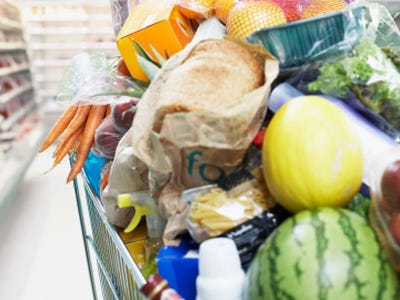February 6, 2014
Oftentimes when I write about sustainable plastic packaging, I can't help but wonder - do consumers understand what that means?
This is why I've read with interest a news release from the Canadian Plastics Industry Association (CPIA) that looked at the connection between plastic food packaging and sustainability. The association said that many people assume that packaging must be recyclable to be "sustainable." And no one is disputing the power of recycling: recycling reduces energy use, and it cuts greenhouse gas. Plus, recycling industries create significantly more and better jobs than simply hauling and burying garbage. Simply put, when materials have value, burying them in a big hole in the ground is an egregious waste of resources.
"But looking only at recycling when reviewing the sustainability of packaging is sort of like choosing a spouse based solely on good looks - there's lots more to consider," the CPIA stated. In fact, there actually are standards for measuring environmental sustainability that look at impacts across the entire "life cycle" of packaging. This includes all the material and energy inputs and outputs of the packaging. We need to look at energy used in manufacturing, water use, energy used in transportation, greenhouse gas and other emissions, impacts of solid waste disposal, and so on, the CPIA stated.
And then there's the big impact: food waste. Just imagine all the energy and resources invested in growing, protecting, delivering, preparing, and serving our food, and the accompanying impact on the environment, they wrote. To protect that investment, we should use the packaging that delivers more food with less food waste and packaging waste. (PlasticsToday covered plastic packaging's role in food waste last year).
The CPIA stated that this is precisely where plastic packaging contributes to sustainability.
"The very nature of plastics - lightweight yet strong - makes them ideal for all sorts of packaging and helps minimize the  environmental impact of the packaging," the association stated. "A recent life cycle study compared six types of plastic packaging (caps and closures, beverage containers, other rigid containers, carrier bags, stretch/shrink wrap, and other flexible packaging) to the alternatives made with other materials."
environmental impact of the packaging," the association stated. "A recent life cycle study compared six types of plastic packaging (caps and closures, beverage containers, other rigid containers, carrier bags, stretch/shrink wrap, and other flexible packaging) to the alternatives made with other materials."
In essence, CPIA states, this means that plastic packaging delivers more food with significantly less waste, energy use, and global warming potential.
"In addition to these benefits, plastic packaging can provide barriers to oxygen, light, temperatures, moisture, microbes, critters and dirt, which can greatly extend the shelf life of food and retard spoilage - leading to less food waste," the CPIA stated. "Studies find that up to 10 times more resources (materials, energy, water) are used to make and distribute food than are used to make the packaging that protects it. In the case of plastic packaging, the numbers can be even better - for example, only three percent of the energy used to produce a loaf of store-brought bread is needed to make its thin, lightweight plastic bread bag."
And they rounded out the story with this: "More food delivered without damage and loss. Less packaging waste. Less food waste. Now that's a healthy contribution to sustainability."
I like that the CPIA took a different approach when talking about packaging sustainability. I think so often we get caught up in all things green - that we forget what exactly sustainability means. It's not limited to just this thing or that thing. For example, if packaging can truly help reduce the world's food waste problem, that's a sustainability story everyone can get beyond.
About the Author(s)
You May Also Like


